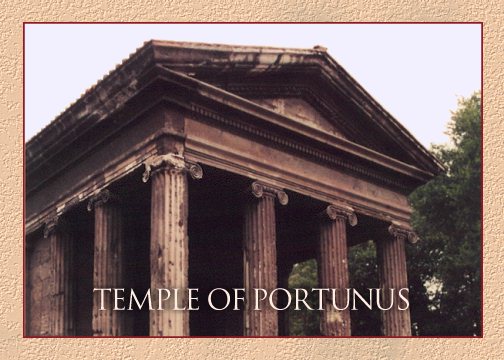

"Propriety is that perfection of style which comes when a work is authoritatively constructed on approved principles. It arises from prescription, from usage, or from nature....The construction of temples of the Ionic order to Juno, Diana, Father Bacchus, and the other gods of that kind, will be in keeping with the middle position which they hold; for the building of such will be an appropriate combination of the severity of the Doric and the delicacy of the Corinthian."
Vitruvius, De Architectura
Vitruvius (IV.7) presents a charming story about the origin of the Ionic order, taking the principle that, as a man's foot was one-sixth his height, so a Doric column should be six times taller than its diameter at the base.
"Just so afterwards, when they desired to construct a temple to Diana in a new style of beauty, they translated these footprints into terms characteristic of the slenderness of women, and thus first made a column the thickness of which was only one eighth of its height, so that it might have a taller look. At the foot they substituted the base in place of a shoe; in the capital they placed the volutes, hanging down at the right and left like curly ringlets, and ornamented its front with cymatia and with festoons of fruit arranged in place of hair, while they brought the flutes down the whole shaft, falling like the folds in the robes worn by matrons. Thus in the invention of the two different kinds of columns, they borrowed manly beauty, naked and unadorned for the one, and for the other the delicacy, adornment, and proportions characteristic of women."
Although it is the spiral scrolls or volutes of the capital that are the distinctive feature of the Ionic order, it is defined as well by the slender proportion of the column, which has twenty-four flutes, and a base (Greek Doric does not have a base but rests directly on the strybolate). The entablature is usually one-quarter the height of the column and has an architrave or epistyle divided into three bands or fasciae, each projecting beyond the other; a frieze, which sometimes was decorated; and a cornice with block-like dentils, in imitation of the supporting beams of a wooden building.
The Temple of Portunus, pictured above, is one of the few in Rome to have Ionic capitals.